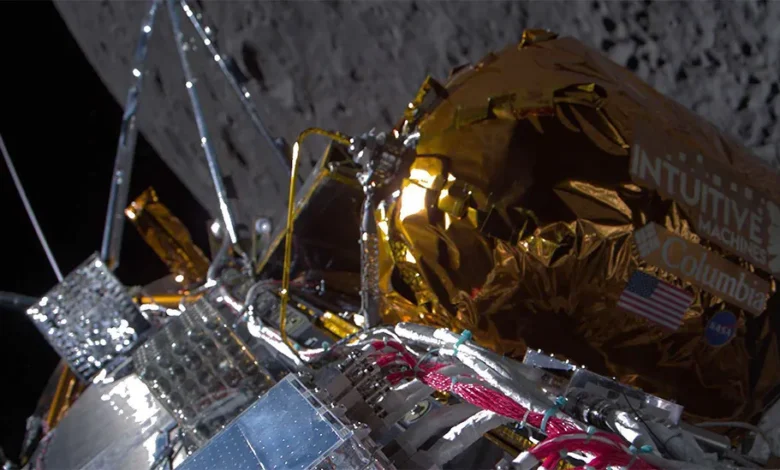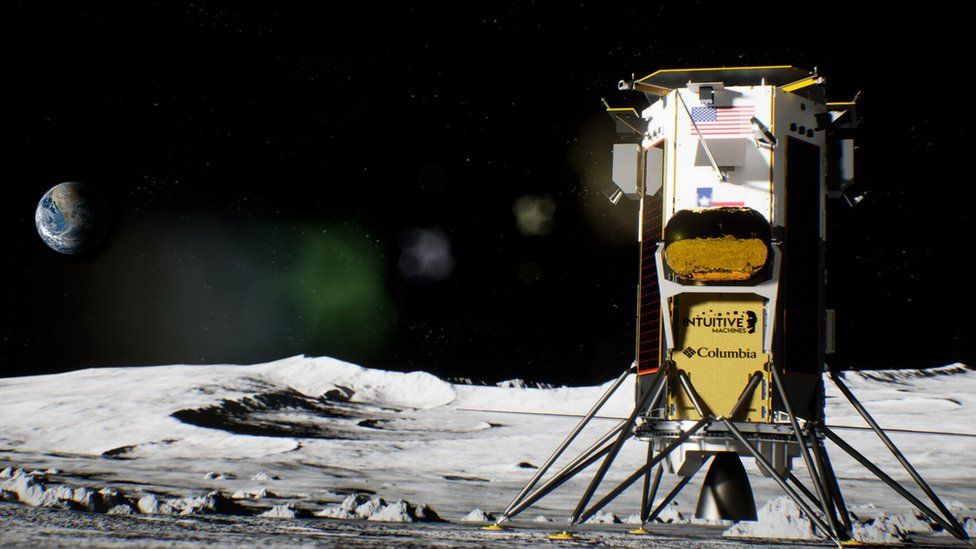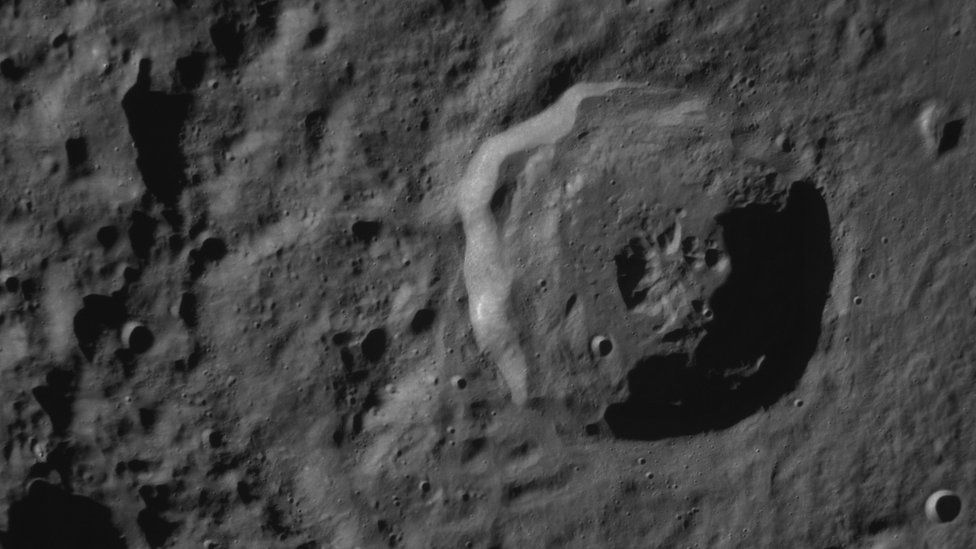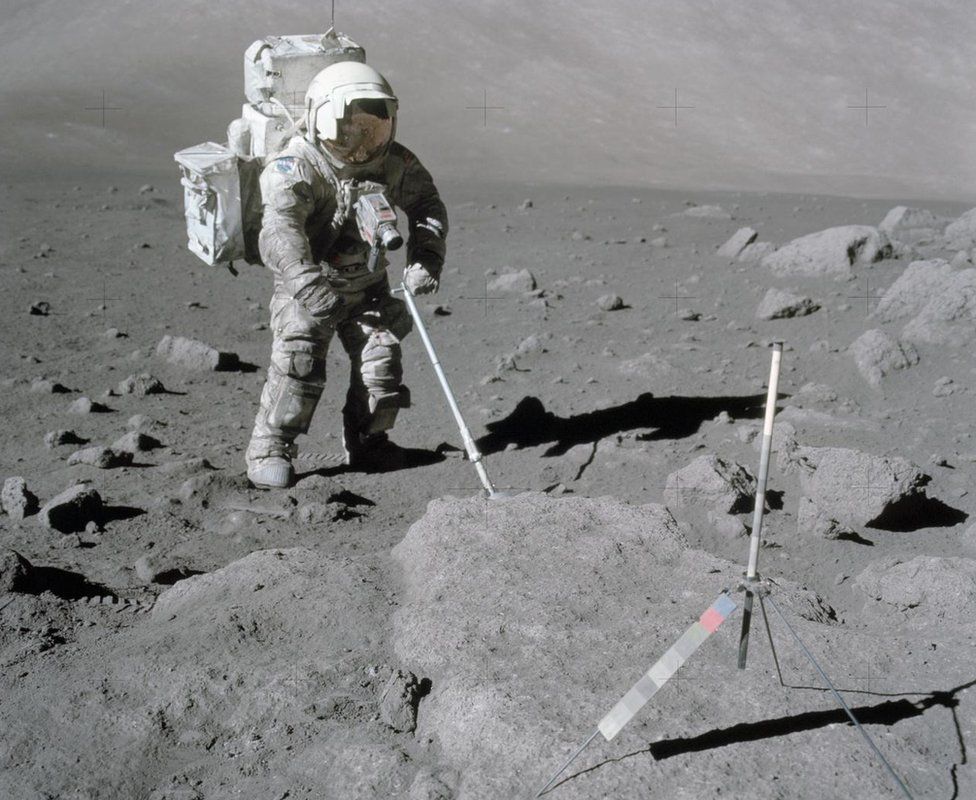Intuitive Machines: American company set for Moon landing attempt

Texan company Intuitive Machines (IM) will attempt to put a spacecraft on the Moon in the coming hours.
If the firm succeeds, it will be the first ever commercial venture to achieve the feat.
It would also represent the first American soft landing on the lunar surface since the Apollo era just over half a century ago.
IM has been contracted by the US space agency (Nasa) to carry scientific instruments to the Moon’s south pole.
The targeted landing site is a cratered terrain next to a 5km-high mountain complex known as Malapert. The region is one of the locations on Nasa’s shortlist of places to send astronauts later this decade as part of its Artemis programme.
The instrumentation should give planners some fresh insights on what surface conditions are like.
Controllers at Intuitive Machines are aiming for a touchdown around 23:24 GMT, although the company has shifted this time back and forth in recent hours.
“The six Nasa payloads and six commercial payloads expect to operate on the lunar surface for seven days before the Sun sets on our landing site at Malapert A Crater on the south pole of the Moon, rendering the IM-1 mission complete. During this time, we will be performing some amazing experiments and technology demonstrations,” said Trent Martin, the company’s vice president of space systems.

IM’s effort follows that of another private concern, Pittsburgh-based Astrobotic, which set off for the Moon in early January but couldn’t even attempt a landing because of technical problems.
The Japanese space agency (Jaxa) had better fortune at the end of the month, reaching the surface safely on 19 January, although it lost several days of operations because it landed awkwardly, leaving its solar array pointing away from the Sun.
IM’s 675kg Odysseus lander is about the size of an old British telephone box. It was despatched from Earth on 15 February and was captured into orbit around the Moon on Wednesday this week.
Controllers will monitor the spacecraft’s descent at the company HQ in Houston but it will be Odysseus itself that will be taking the key decisions on approach.
Initially at 100km altitude, Odysseus will use its guidance system to bring itself to a point roughly 30km above the designated landing site, and then drop straight down. The big engine on board is expected to slow the descent to just one-metre-per-second at the moment of landing.
If the mission gets down safely it will be the southernmost landing yet executed. The Indian space agency (Isro) currently holds this record, thanks to its historic Chandrayaan-3 Vikram lander, which settled on the lunar terrain in August last year at 69 degrees South.
IM’s target is at 80 degrees South, a mere 300km from the south pole proper.

The mission is part of Nasa’s Commercial Lunar Payload Services (CLPS) programme, in which the agency is paying various private American companies for transport services to the Moon – in this particular case, with a fee of $118M (£93m).
“With commercial industry comes a competitive environment, which means that our investment up front ultimately gets far more for far less,” explained Nasa’s CLPS project scientist Susan Lederer.
“Instead of one (Nasa) mission in a decade, it allows for more like 10 commercial missions to the Moon in a decade; instead of four or five instruments in that one decade, it’s more like four to five dozen instruments.”
Nasa’s six instruments are joined on Odysseus by payloads from six other IM customers.
These include a student camera system from Embry-Riddle Aeronautical University which will be deployed from Odysseus when it is still 30m above the lunar surface. The camera will try to take selfie images as the spacecraft touches down.
The American artist Jeff Koons has also attached a box to the side of the lander that contains 125 small stainless steel balls to represent the Moon’s different phases through a month.
And there’ll even be a telescope from the International Lunar Observatory Association on board, taking pictures of the Milky Way Galaxy. The Moon is an ideal place to do astronomical research because it doesn’t suffer from some of the confounding effects experienced on Earth, such as a blurry atmosphere and radio interference.

Nasa’s payloads will concentrate on getting information that will be useful to future human exploration. There are novel technologies on Odysseus to aid precise navigation and to know exactly how much propellant is available to a craft’s thrusters.
There will also be investigations of lunar dust, which the Apollo astronauts found to be a serious nuisance, scratching and clogging their equipment.
The agency’s scientists want to understand better how the dust is kicked up by landing craft to hang just above the surface before then eventually settling back down.
Historically, about half of all soft landings on the Moon have succeeded.
This is true even in the modern era, in this century, which started with China’s Chang’e-3 mission in 2013. It worked, but of the 10 attempts since, six ended in failure.










